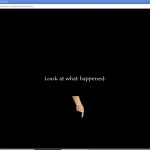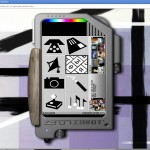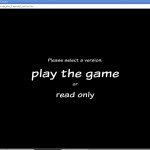Stamen Design’s Photo-Sharing Explosions Flowers are similar to the data visualizations We Feel Fine and The Whale Hunt: a harmonious balance of content, form, and humanity. In other words, the original data has not been altered extensively into an entirely new form, such as in Black and White by Mark Napier, a “non-visualization” of the 0’s and 1’s in programming code. Nor has it exclusively been collected and simply rearranged (in its original form) to make an assessment, such as Making Visible the Invisible by George Legrady et al., a numerical map of titles checked out at a public library. It finds a “happy medium” of both methodologies while simultaneously connecting it to the human element.
Specifically, We Feel Fine connects to the emotions in words written throughout the internet; The Whale Hunt connects to the emotions of experience from the photographs of a trip; however, the Photo-Sharing Explosion Flowers take a broader leap: they project the act of sharing—a fundamental human expression of love—from 3 posts on George Takei’s wall on Facebook. Moreover, the form Stamen Design’s group chooses to display this buried element of humanity further highlights this connection: a growing flower. Thus, it reveals the interconnectivity not only between humans but between all forms of life.
(It also makes me question: Since Facebook asked Stamen to create this for the new site Facebook stories, was their purpose to reveal the human element in Facebook? Was Facebook’s purpose a PR ploy? If the answer is “yes,” does this take away the authenticity and therefore “humanness” of the project because a “machine” or corporation asked Stamen to do it?)
It is also important to note that these three re-imagined databases could not project a certain aspect of humanity without starting from that element. Napier and Legrady start with “cold, hard numbers” and end there.





